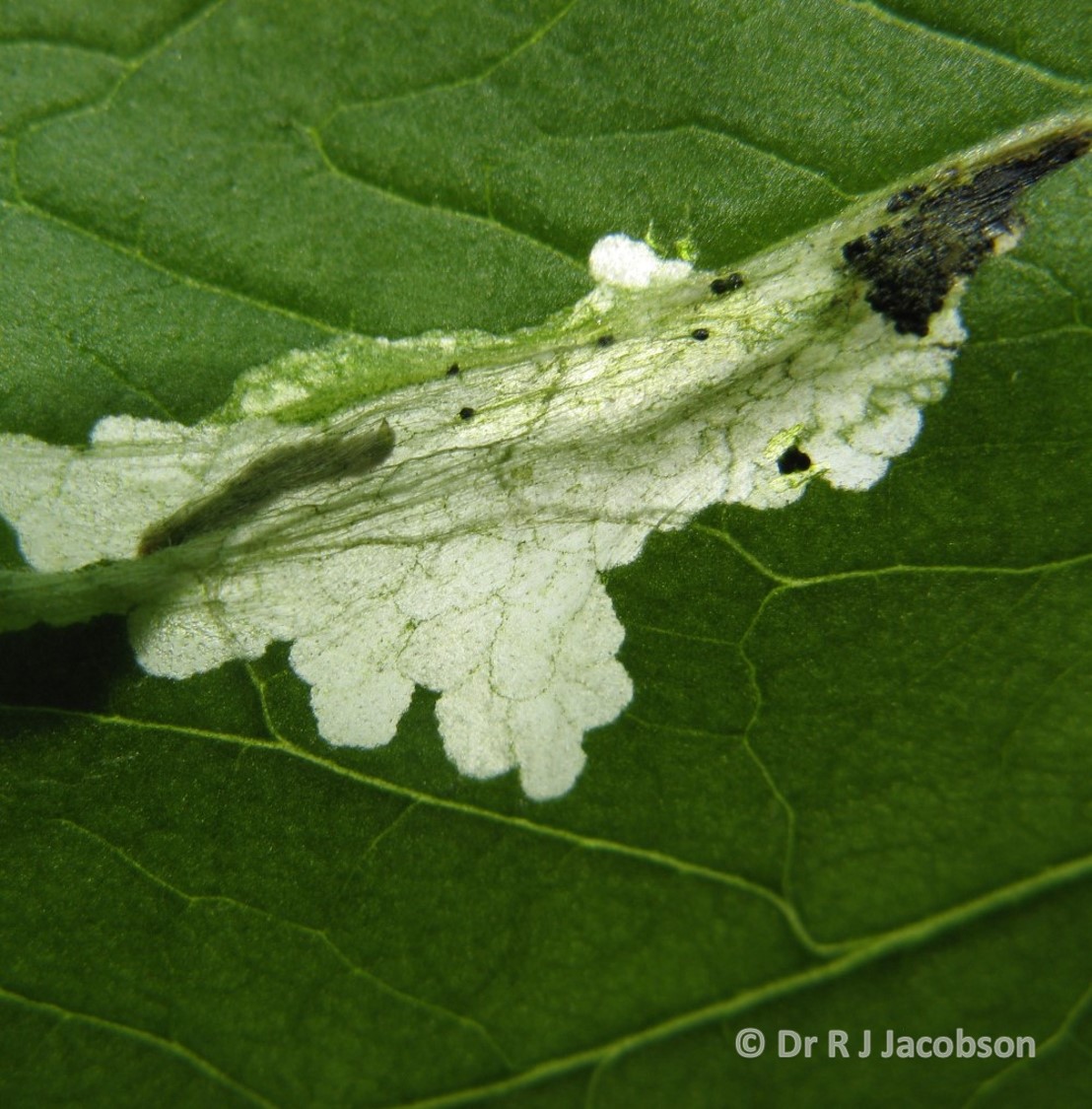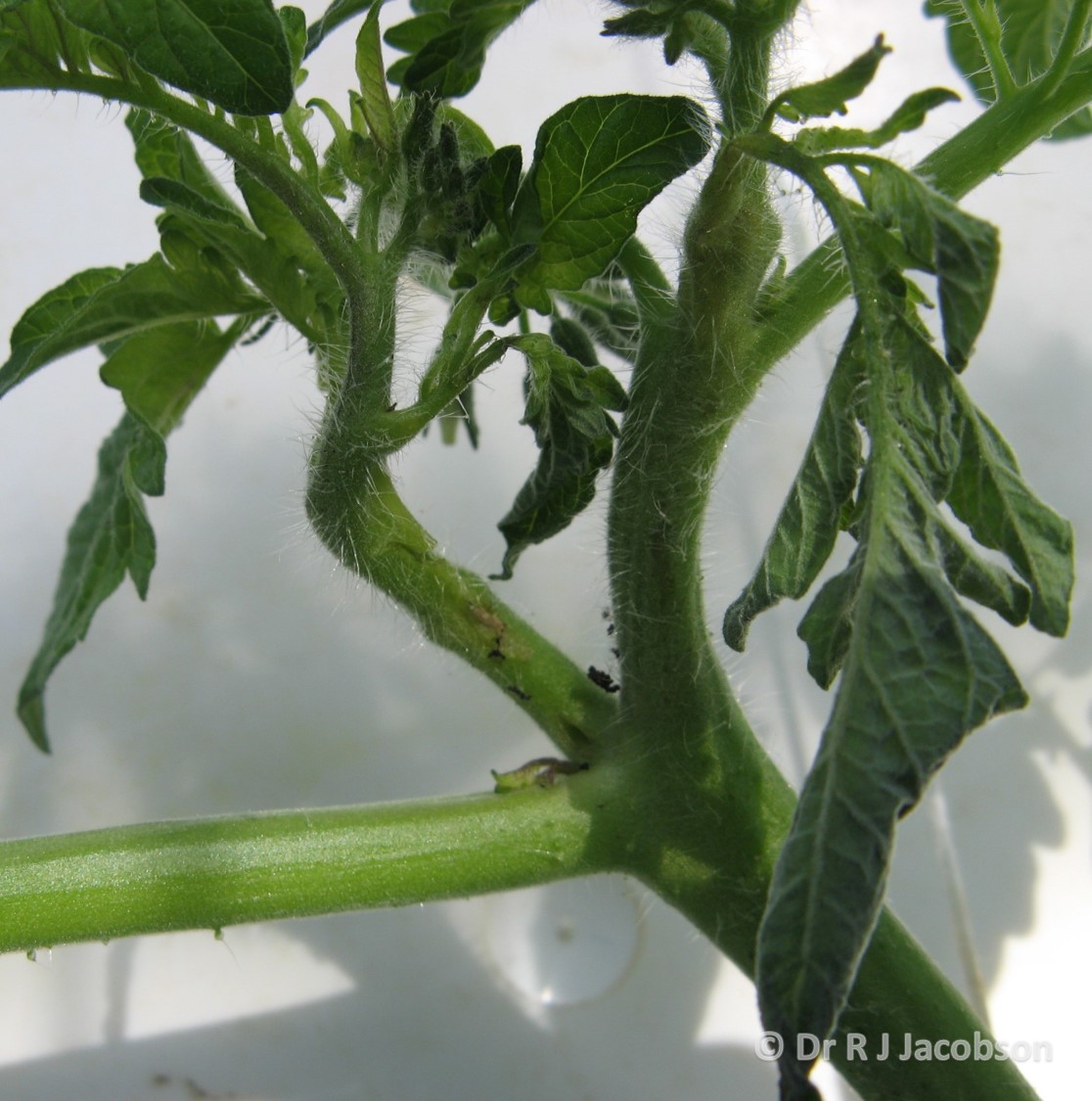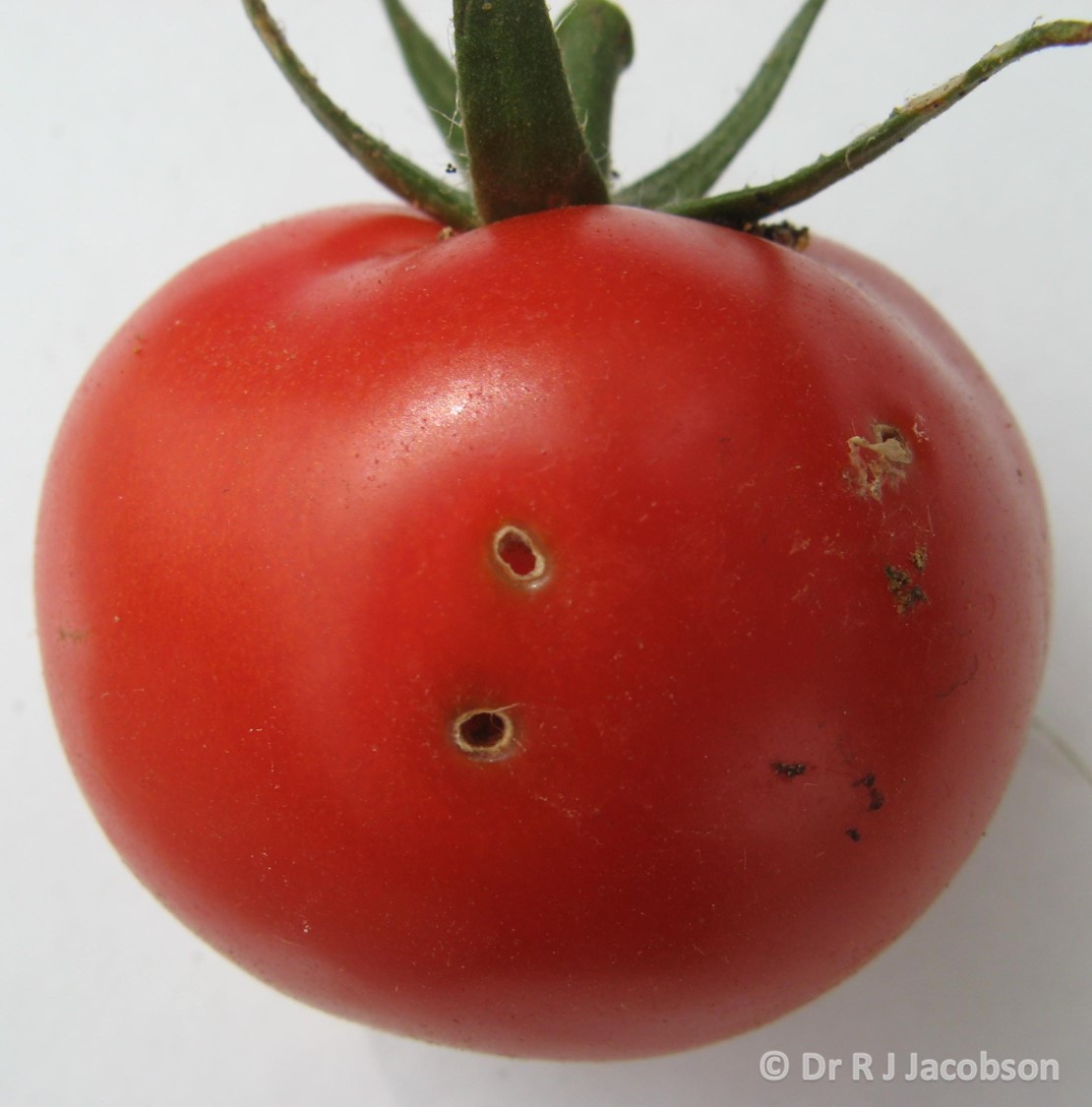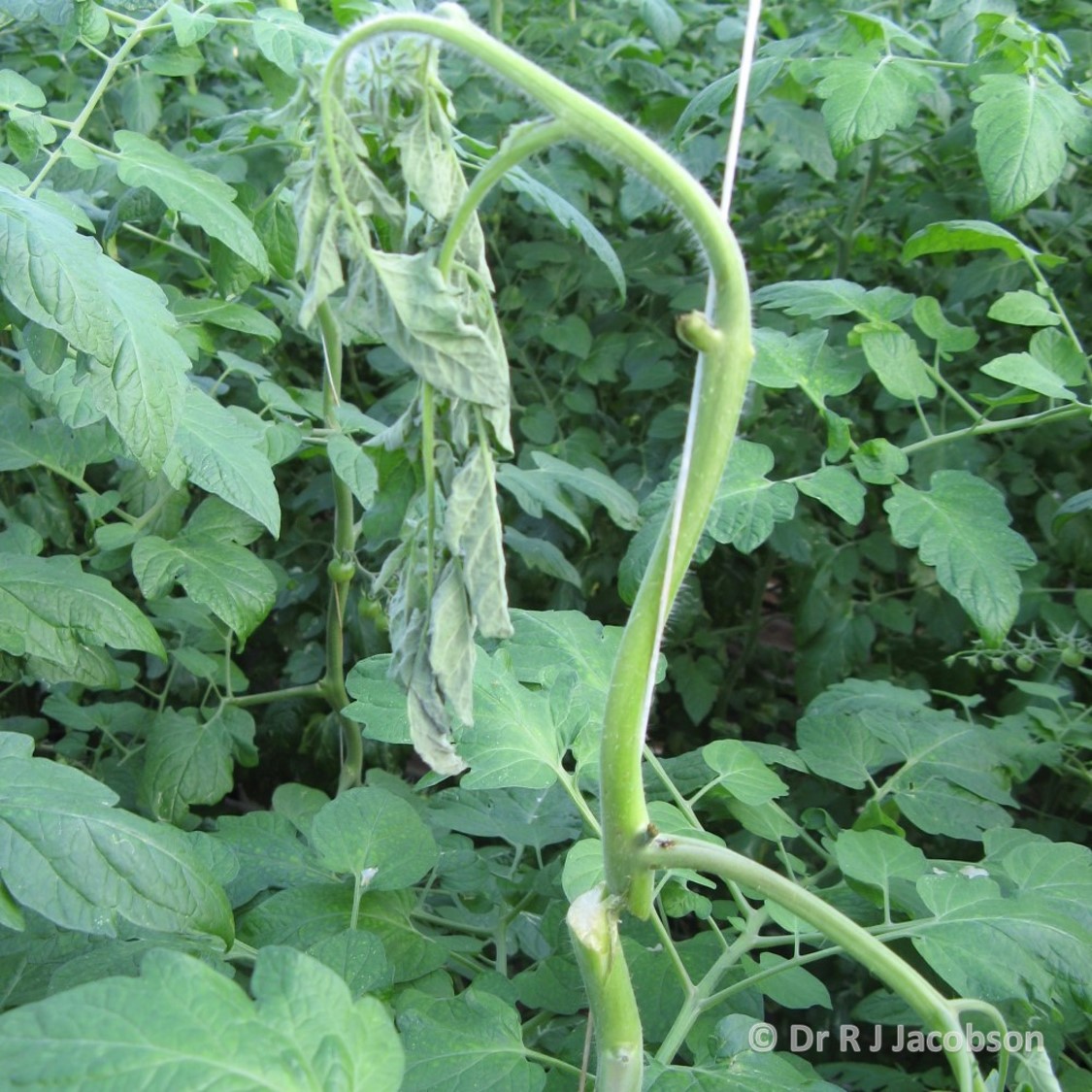Please click here to access the main AHDB website and other sectors.
- Home
- Knowledge library
- Tomato crop damage caused by Tuta absoluta
Tomato crop damage caused by Tuta absoluta
The larvae of Tuta absoluta mine in the leaves, stems and fruit of tomato plants, causing devastating damage. Find out the signs of damage to look out for.
Back to: Biology and control of Tuta absoluta in tomato
Egg hatch and young caterpillars
Adult female Tuta absoluta lay large numbers of eggs on the underside of tomato leaves, petioles and stems in the upper stratum of the crop canopy. By the time the eggs hatch, those leaves may be 0.6 m below the top of the plants. In most situations, the young caterpillars are exposed on the plant surface for less than 90 minutes before they become totally encased within the plant tissue. It is during this short period that they are most vulnerable to contact insecticides and biopesticides.
Leaf damage
Within leaf tissue, the larva produces a distinct ‘blotch’ mine, which contains an accumulation of dark-coloured frass in a designated area of the mine.
Without effective control measures, the crop could be destroyed by this type of damage by midsummer. It has been estimated that this scenario would result in losses in excess of £300,000 per hectare.
A leaf mine on a tomato leaf caused by Tuta absoluta

Image © Rob Jacobson Consultancy Ltd.
Damage to plant growing points
Under some conditions, which are not yet fully understood, young caterpillars migrate to the top of the plant where they graze more openly on the furled leaves. This is potentially very serious because it can rapidly result in destruction of the growing point and loss of the plant.
Additional control measures
Regular crop monitoring is essential for early detection of this change in behaviour. On a positive note, the larvae do remain vulnerable to contact insecticides and biopesticides for a longer period, thus allowing a wider range of control options.
Damage to the growing point of a tomato plant caused by Tuta absoluta

Image © Rob Jacobson Consultancy Ltd.
Fruit damage
If a larva penetrates a fruit, the entrance point is often below the calyx where it may be overlooked during crop monitoring. However, the exit holes are larger and more obvious.
Economic losses
At one nursery during June–July, 30% of fruit were damaged by the pest and graded out. This represented a loss of approximately £50K per hectare to that grower for that period alone.
Damage to stem of tomato plant caused by Tuta absoluta

Image © Rob Jacobson Consultancy Ltd.
Damage to stems
It is less common for larvae to tunnel in stems but if that happens, the stem is severely weakened.
Weakened stems may break during routine crop work. If side shoots have already been removed, this results in the loss of production from that plant for the remainder of the season.
Damage to stem of tomato plant caused by Tuta absoluta

Image © Rob Jacobson Consultancy Ltd.
Useful links
Learn about the life cycle of Tuta absoluta
Read about how to monitor Tuta absoluta populations in tomato crops
Author
The content on this page was authored for AHDB by Dr Rob Jacobson (Rob Jacobson Consultancy Ltd).
Topics:
Sectors:
Tags:

